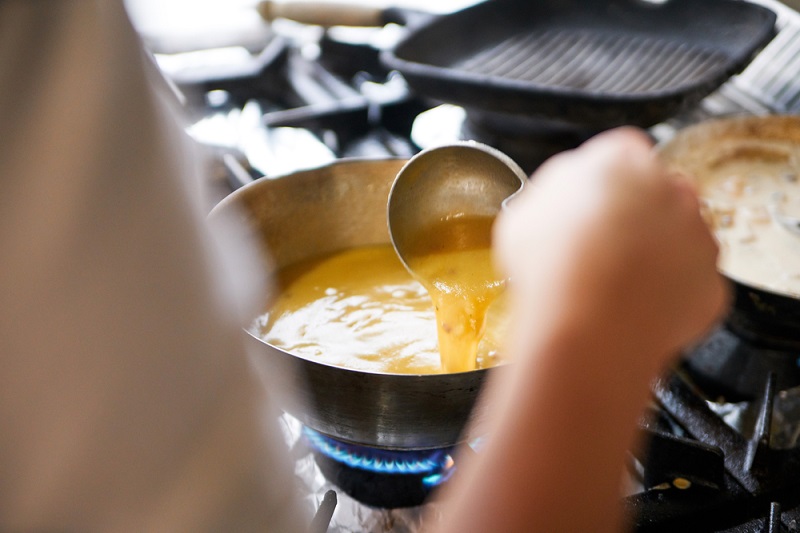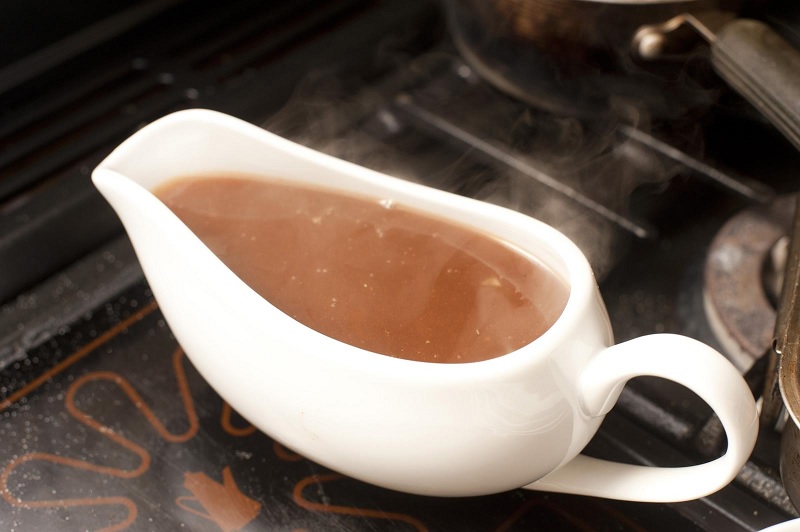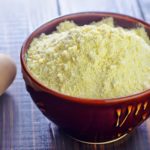Do you have a favourite part of a roast dinner? When asked this question, many people reply with something like “roast potatoes,” “roast beef,” or “Yorkshire puddings.”
While these are all great answers, one of the most unsung heroes of a roast dinner is the gravy.
Plenty of traditional British and Irish dishes wouldn’t be complete without a generous helping of gravy. It’s thick, flavoursome, and adds an extra layer of comfort during the cold winter months.
Many brands offer their own take on gravy granules which can provide you with a quick and easy sauce, but nothing matches up to the taste of the homemade version.
Most gravy recipes use flour as a thickener, meaning many people don’t know how to thicken gravy without flour.
If you’ve suddenly been caught short though, don’t panic! There are plenty of other options that you can use instead of flour to create the perfect gravy.
What Can You Thicken Gravy without Flour?
Flour is one of the most common thickeners for making gravy and other sauces. This is because the high levels of starch soak up some of the liquid that has been added to the sauce.
If you don’t have any flour to hand, you typically have three alternative options for thickening your gravy: (1) use a different source of starch, (2) add pureed vegetables, and (3) reduce the gravy. Each of these options is covered in detail below.
1. Other sources of starch
When making gravy, four alternative sources of starch to flour are recommended: corn starch, potato starch, tapioca starch, and arrowroot starch.
Of these, corn starch is the most common and can be picked up from your local supermarket. You usually must go to a health food store to find the others.
To avoid lumpy gravy, you will need to mix each of these starches with a bit of cold water before adding them to the sauce. This causes the powder to break up, preventing clumps from forming when it comes into contact with heat.
You can then simmer your gravy for a few minutes until it reaches your desired consistency.
Unfortunately, tapioca and arrowroot starch often cause small lumps to form in your gravy, even when they have been watered down. To avoid this, you can either stick to one of the alternative options or strain your sauce before serving.
For a more unconventional approach, add potato water to your gravy instead of flour. According to the Daily Express, the potatoes will have left behind enough starch in the water to effectively cause your gravy to thicken.
2. Pureed vegetables
If you don’t have an alternative source of starch to hand and can’t get a hold of one, your next option is adding pureed vegetables to the gravy. This will effectively thicken the sauce while also giving you some added nutrients!
All you need to do is cook your chosen vegetables until soft, put them in a food processor, and then blitz them until the vegetable puree is smooth. Mix as much puree into your gravy as needed to reach your desired consistency.
When thickening gravy this way, bear in mind that whatever vegetables you use will have their own flavour and will alter the taste of your sauce.
Potatoes and carrots are the safest options as they are fairly mild, but you can use any vegetable of your choosing.
3. Reduce the gravy
The last and most straightforward way to thicken gravy is by reducing it. This process doesn’t require any added ingredients, but you will need some patience as it can take a long time to achieve the desired result.
For this method to work, simmer your gravy on a medium heat until enough liquid has evaporated from the pot to leave behind a thick gravy.
Remember to keep an eye on your pan while doing this to ensure it doesn’t boil over, and regularly stir the gravy so that it doesn’t split.
As the liquid in the pot reduces, the flavours in your gravy will become more concentrated, leaving behind a delicious sauce.
However, it can take a long time for your gravy to reach this point, so this method is best used when you want a slightly thinner sauce or have plenty of time on your hands.

How Is Gravy Made From Scratch?
Making gravy from scratch is one of those things that sounds difficult but is actually straightforward in practice.
There are a wide variety of gravy recipes out there, some of which get all their flavour from stock, and others that use meat juices or seasonings to add depth of flavour.
For the most basic gravy, you will typically need to
- Heat two tablespoons of fat (e.g., meat juices, butter, or oil) in a saucepan.
- Add 240 ml of stock and bring the sauce to a simmer on a low heat.
- Thicken your sauce by using one of the above methods or by adding a little flour.
- Continue to let the sauce heat and thicken until you’re ready to serve.
Once you have this basic recipe down, you can add different herbs, spices, and vegetables until you create a gravy that perfectly matches your taste.

Hannah is a freelance content writer and self-proclaimed foodie. When Hannah isn’t sitting tapping at her laptop, you’ll probably find her in the kitchen. As an ex-chalet host, she’s used to cooking four-course meals for 10+ people and loves feeding friends and family whenever possible.







